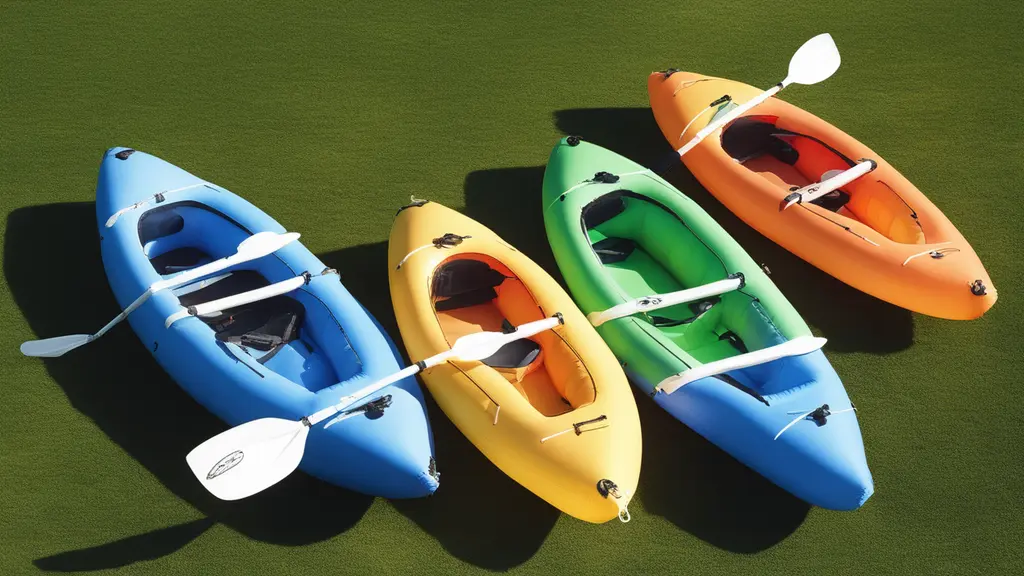In recent years, inflatable kayaks have gained popularity as a convenient and portable option for water enthusiasts. However, the safety of inflatable kayaks is a topic that often sparks questions and concerns among potential users. In this article, we will delve into the world of inflatable kayaks, addressing common user questions like: are inflatable kayaks safe?
Inflatable kayaks have evolved from being perceived as mere pool toys to becoming a legitimate alternative to traditional hard-shell kayaks. With advancements in materials and construction techniques, modern inflatable kayaks offer an appealing blend of portability, convenience, and affordability. The big question, however, remains: Are inflatable kayaks safe?
Benefits of Inflatable Kayaks

Before diving into safety concerns, let’s explore some of the benefits that make inflatable kayaks an attractive option:
- Portability: Inflatable kayaks are incredibly portable. They can be deflated, folded, and stored in a compact bag, making them ideal for travelers or those with limited storage space.
- Affordability: In comparison to hard-shell
How to Build a Rack for Kayaks?
, inflatable kayaks tend to be more budget-friendly, allowing more people to enjoy kayaking without breaking the bank. - Easy Storage: The compact nature of inflatable kayaks makes them easy to store, eliminating the need for dedicated storage space like a garage or shed.
- Lightweight: Inflatable kayaks are generally lighter than their hard-shell counterparts, making them easier to transport and maneuver both on and off the water.
Factors Affecting Safety
The safety of inflatable kayaks depends on various factors, including:
Material Quality
High-quality inflatable kayaks are constructed from durable materials that are puncture-resistant and capable of withstanding the rigors of water activities. Look for kayaks made from robust PVC or other reinforced materials.
Design and Construction
Well-designed inflatable kayaks incorporate multiple air chambers to ensure that even if one chamber gets punctured, the kayak remains afloat. Additionally, well-constructed kayaks have reinforced seams and reliable valves to prevent air leaks.
Weight Capacity
Every inflatable kayak comes with a specified weight capacity. Exceeding this limit can compromise the kayak’s stability and safety. Always adhere to the manufacturer’s weight recommendations.
Proper Inflation
Underinflated kayaks can reduce stability and maneuverability. On the other hand, overinflation can stress the material and increase the risk of bursting. Following the manufacturer’s guidelines for inflation is crucial.
Stability and Performance
One of the primary concerns users have regarding inflatable kayaks is their stability and performance in the water. While inflatable kayaks might have a slightly different feel compared to hard-shell kayaks, they offer commendable stability, especially in calm waters. Many models are designed with wider bases to enhance stability.
Durability and Longevity
The durability of an inflatable kayak is closely tied to the quality of materials and construction. High-quality inflatable kayaks can withstand encounters with rocks, branches, and other common obstacles. However, it’s important to remember that inflatable kayaks may not be as durable as hard-shell kayaks in extremely rough waters or challenging conditions.
Safety Precautions
To ensure a safe and enjoyable experience while using an inflatable kayak, consider the following safety precautions:
Personal Protective Equipment (PPE)
- Always wear a properly fitting and U.S. Coast Guard-approved personal flotation device (PFD) or life jacket.
- Wear appropriate clothing and footwear to protect against the sun, water, and potential hazards.
Skill and Training
- Acquire basic kayaking skills before embarking on more challenging waterways.
- Familiarize yourself with proper paddling techniques and how to maneuver the kayak effectively.
Weather Conditions
- Avoid kayaking in extreme weather conditions such as thunderstorms, heavy winds, or severe cold.
- Check weather forecasts before heading out and be prepared for any changes.
Water Type
- Choose appropriate water bodies for your skill level. Calm lakes and slow-moving rivers are generally safer for beginners.
- Avoid strong currents and turbulent waters until you are more experienced.
User Feedback and Industry Standards
The safety of inflatable kayaks is supported by positive user feedback and adherence to industry standards. Reputable manufacturers follow established safety guidelines in designing and producing their kayaks. Reading user reviews and seeking recommendations from experienced kayakers can provide valuable insights into the safety of specific inflatable kayak models.
Conclusion
Inflatable kayaks have come a long way in terms of design, materials, and safety features. When used correctly and in appropriate conditions, inflatable kayaks can provide a safe and enjoyable experience on the water. By paying attention to factors such as material quality, design, weight capacity, inflation, and safety precautions, users can confidently embrace the world of inflatable kayaking.
As with any water activity, safety should always be a top priority. Adhering to recommended guidelines, acquiring the necessary skills, and making informed decisions about when and where to kayak will contribute to a positive and safe inflatable kayaking experience.
Read More about Kayaks:
- What to Wear for Kayaking in Summer
- How to Store a Kayak in the Garage
- What is a Skeg on a Kayak
- What is a Tandem Kayak
- How to Build a Homemade Kayak Launch
- How to Get in a Kayak
- What to Wear for Kayaking?
- How to Transport a Kayak Without a Roof Rack?
- How to Build a Kayak Rack for an RV?
- How Much To Rent a Kayak?

Meet Hudson, an enthusiastic writer and the Chief Editor at Outdoor Bravo Blog. Hudson’s heart belongs to the world of kayaking and kayaks, fueled by his insatiable love for nature and adventure.
